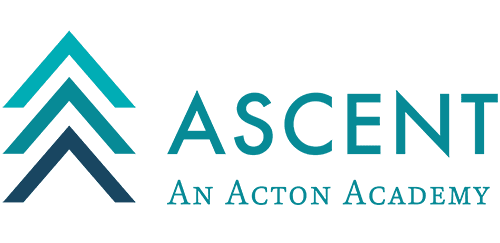Welcome to the Spark Insight Journal and to the new academic year! This journal will provide you with context, tools, and a deeper understanding of studio life. This first post is all about helping your family through the first few weeks with some key themes that often come up right away, as well as a place to come back to throughout the year as needed.
As we get ready to welcome the autumn colors, piles of leaves, and everything cinnamon and cozy in the environment; we welcome you to a wonderful new season of life in Spark studio. This season marks a transition not only in the weather and climate, but also in an introduction to new and old routines, order, friends, guides, and traditions.
At Ascent, each year has been new in more ways than one, as we’ve built on our existing strong foundation. We recognize and understand that transitions are a natural part of life, and compassion is key as we move through them. We call it our “Fresh Eyes” approach. Beginning each day with fresh eyes and a beginner’s mind ready to inquire and absorb without any judgments or biases. This is foundational for guides, however, as your child navigates new experiences, we encourage you to practice having Fresh Eyes each day, and modeling the mindset for your children as well.
We are beginning the year with a few helpful FAQs to get you started and guide you through our days and processes at the Spark level.
What does a typical day for a learner look like?
Here is a day in the life of a Spark learner. While this stays mostly consistent, it is subject to change.
Do we help children with settling in and transitioning into their first few weeks at school?
Transitions are tough because Crossing the Threshold into the Unknown is scary. For all of us. Last week, the learners started on the right foot, embarking on this ‘new and unknown world’. Mornings, mid-days, and weekend transitions may seem tough at this point in the journey but will evolve, especially as the learners’ memory banks grow with feelings of empowerment, positivity, and curiosity within the environment. These moments are opportunities for us all as fellow travelers (families and guides) to come back to the “Fresh Eyes” approach as a great reminder to begin each morning with the understanding that each day is an opportunity, and thus support the learners in order to build resilience, and expand their circle of comfort and library of experience.
The learners will be spending their days in exploration and in soaking in the newness with our support. They will also be absorbing and learning lessons of freedom that the environment provides, and of the boundaries that come along with it. In the coming days, if the transition to school seems hard, know that it is natural as the learners navigate a new environment and all that comes with it. We will hold space as the learners will be tapping into, experiencing, and navigating beyond their feelings and emotions, coming out on the other side empowered and independent, knowing that they are stronger than those moments of insecurity.
Will my child get a new lesson every day?
The Spark environment follows a Montessori morning work cycle which is individualized according to the needs, interests, and learning style of each child. The guides “Follow the Child,” which means that they base their lessons (introduction of new works in Montessori language) on detailed and objective observations they make during the course of the day, which is one of the very important aspects of their role in the studio.
Daily lessons range from large or small group lessons and individual lessons that the learners will then try on their own. As the guides observe, they are trained to determine when and how to introduce a new or a challenging lesson to a learner, and when to review a previous lesson for repetition in a skill, considering such factors as the age, pace, and interest of the child. Once a work is introduced with a lesson, the children freely choose to learn with it whenever, and as many times as, they are intrinsically called to it. Before a guide invites a child for a new lesson, they consider if:
– they have yet to receive lessons on the series of work that precedes the work they are seeking a lesson on (building a foundation through the Montessori scope and sequence),
– The guides are observing for a child to pick previously introduced works independently (without the guide’s encouragement), repeat the lessons with concentration, and finish the works.
The beauty of Montessori is that it is a child-led, process-based method spanning over years that involves repetition of works to gain proficiency, as opposed to, a fast-paced process that introduces concept after concept.
Thanks for trusting us with your child and being on this journey with us.
With love and gratitude,
Spark Guides


